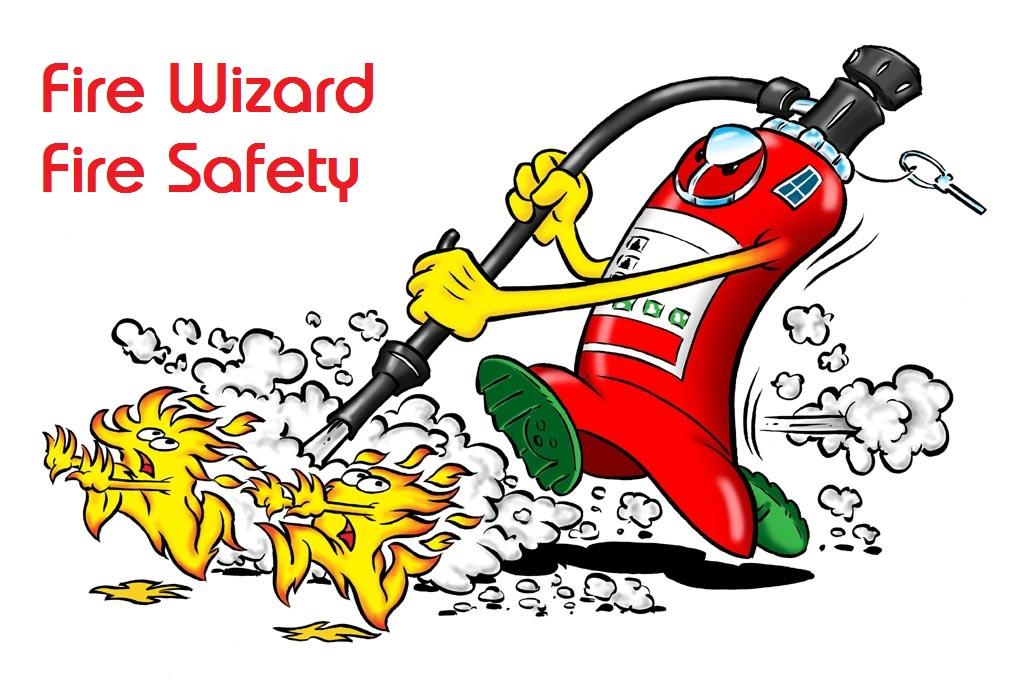-
Posts
2,575 -
Joined
-
Last visited
Everything posted by AnthonyB
-
It's not been acceptable for many years and there have sadly been many deaths where these were a factor over the last 60 years. There are so many simple alternatives available there is no excuse for not replacing them.
-
Many providers put a three year expiry on, using first aid training (which does have a set expiry) as a benchmark, but it's not mandatory. One Crown Department I am working with at the moment provides initial formal training with no refresher as long as the warden has taken part in at least one fire drill every 12 months - if they have gone longer than 12 months they have to go on the course again.
-
As you are legal Guardians and living as a single Household the situation is the same as if you were a normal parent & child family so you aren't a HMO - however your fostering agency or local authority may have their own requirements in addition to those in the Housing Act
-
Just because you are a charity and in serviced offices doesn't exempt you from the legislation, even if you don't employ anyone. With a serviced office you benefit from most provisions being made and maintained by the office provider, but it's up to you to assess if it's adequate for your needs and implement fire precautions measures with relation to matters under your control, as well as training staff.
-
Yes if it forms part of a building wide system and the leases to the flats should be robust enough to give them rights of access to do so.
-

When do you need cold smoke seals for fire doors?
AnthonyB replied to a topic in Fire Doors and Accessories
I don't know why, It's quite clear in Building Regs and all the guidance. A guick summary is if used to protect means of escape then the door should have smoke seals (e,g, be an FD30S or FD60S), if it's only to enclose an area of high risk or similar that isn't part or an escape route they don't (FD30 or FD60). A full list of types for situations is in Appendix A of Approved Document B -
Just adjust the closer or if it is old replace it.
-

Extinguishers for oxygen cylinders in people carriers
AnthonyB replied to a topic in Fire Extinguishers
Oxygen doesn't burn so the extinguishers would not be for these, but for a fire in the passenger or engine compartments. The only laws covering extinguishers are the PSV Regs and the Road Vehicles (Construction & Use) Regs that cover the provision on Public Service Vehicles (Buses & coaches) and Minibuses respectively and for vehicles carrying hazardous substances (over certain thresholds) the ADR Regulations. Taxis have local requirements as part of their licensing and different local authorities have different requirements. Your vehicles don't fall under any of these and don't automatically require extinguishers. The normal annual service regime in BS5306-3 does not apply to vehicle based extinguishers however to ensure efficacy a service would be preferred to a visual check, although the later is sufficient legally. I would be more worried about the fact that you are using powder extinguishers which if discharged would make the people you transport (chronic lung diseases hence the O2) very very ill as the finely divided powder causes difficulty in breathing and coughing even in healthy people. Ambulances usually have small foam extinguishers because of this and all buses and coaches have to use foam as powder is specifically prohibited by the regulations for these vehicles. Therefore I would change the powder extinguishers for 1 or 2 litre foam spray (if the powders are 5 years old or more they are due replacement anyway), and then regularly visually inspect them. -
Any decent electrician should have included the appropriate detection as part of the rewire. Existing owner occupied houses aren't required to have anything, but a Grade D LD3 system is recommended minimum with hard wired detectors (i.e. powered by 240V) that have an internal back up power source linked to each other by cable or wireless bases (so they all go off) located in circulation areas. Smoke detection to escape routes, heat to the garage (false alarm risk) All available on the Safelincs site
-
You may not need any, also if you did you would not normally be able to use domestic smoke alarms and heat alarms but instead a proper fire detection & warning system to BS5839-1:2012 with control panel ,manual call points, sounders and, where necessary, smoke & heat detectors. If the premises are small enough for a shout of fire to be heard throughout you do not need a fire alarm unless you have a specific risk requiring detection (such as an inner room with no vision panel). If the premises are larger they will require an electrical fire alarm system to BS5839-1 comprising control and indicating panel ,manual call points and alarm sounders (Category M system). If there is a specific risk where a fire would grow undetected such that it could compromise escape then you would need detectors as well (categories L5 to L1). Your Fire Risk Assessment would determine what Category is needed. Due to false alarm risk heat detectors are used in and near to cooking areas.
-
In a word - Yes - if the ground floor hall and stairs are shared between the ground & 2nd floor flats these areas are covered.
-
Yes, look on most decent ironmongery websites - you can get turn knob or lever 'external access devices' that allow a panic bolt/latch to be opened from the outside face. They generally incorporate a key lock so that whilst the panic bar will always work you can lock off the function of the external device (it will just spin without engaging the bolt) for security.
-
It's either a fire exit or not - if it is it should be signed, clear of obstruction and easily openable (from the Gym side) without resort to a key or code. If it isn't a required exit it can be obstructed, locked up like Fort Knox and should have signage renewed.
-
You should have a sufficient number of fire wardens to sweep the premises as they evacuate so that no one is left behind. Whilst roll calls can be a useful back up to this used alone they can be counter-productive as they can take too long and rely on the lists being accurate.
-
If the building is designed for 'Stay Put' you wouldn't be evacuating en-masse anyway so a drill is not required.
-
Not at all - hence why only fit on refurb/building work unless the risk warrants it. Borrowed light off other circuits (such as street lights) can be used in mitigation at present as long as the borrowed light is in operation at material times (important where councils cut back on lighting hours) but the rumour is the next revision of BS5266 will remove the ability to do this.
-
I'd get the enforcing authority in as well - if your ground floor has a secondary fire exit this is usually (but not always) because it was necessary. How do they know one exit is all they need?
-
You can add alarms, tamper ties, etc as in the link above. Secondary mechanisms (such as adding a Redlam Bolt) may be an option too, but this would be subject to risk assessment as it adds another action to release the door (ideally a single action should release a fire exit)
-
The exterior of final exits should have an emergency light. For existing buildings without this provision the fire risk assessment (which is even required for Scout Huts!) would determine the urgency of upgrading, however if you are already carrying out a refurbishment project to your external lighting it would generally be expected to apply current standards and install EL as part of it.
-
From the manufacturers FAQ: The key to responding to a post FM-200™ discharge is to evaluate the scope and nature of the fire event. If there was no fire event, the agent can be safely and quickly removed through conventional air handling (turn on the AC, open the doors and windows) and will pose no danger to the respondents or the employees working in the space. FM-200™ is safe for people to breath at normal design concentrations. In the event of a fire, most FM-200™ systems are designed to respond while the fire event is still in the earliest stages and very small. In a typical electronic computer facility the fires are low energy, slow growth events. Early detection limits the potential for fire damage and combustion by products. Modern electronics, however, can give off a wide range of noxious byproducts when burned. For this reason, it is recommended that firefighters employ SCBA when re-entering a space. FM-200™ will generate some HF (Hydrofluoric Acid) as a result of extinguishing the fire. In general, there is no requirement to decontaminate firefighter gear after responding to an FM-200™ event. There will be little or no residue, other than possible combustion products from the fire, within the protected space. Repeated fire tests have been performed, without ever decontaminating the fire suits used by the technicians.
-
Emergency Lighting should be installed off local lighting circuits otherwise it will not operate if there is a partial loss of lighting in the premises. It is not uncommon however to find that less than competent installers at some time in the history of a premises have put EL on a dedicated circuit (getting mixed up with fire alarm power supply requirements) instead of the local lighting circuit. Rewiring is often not feasible, so the easiest way of making the system compliant is to replace the non maintained fittings on the dedicated circuit with maintained fittings that are always lit. The running costs of such a change are negligible if you use LED fittings.
-
Yep, no additional Manual Call Point needed
-

Fire Risk Assessment in a freehold and landlord
AnthonyB replied to a topic in Fire Risk Assessments
Only if he wants one. There would however have to be a fire risk assessment of the common areas, which may require the provision of a fire detection and alarm system based upon the fire resistance of the premises after conversion - sometimes these conversions require a mixed system with provision to each flat and a common system. -
Maintained means just that, although you do see some that are wired so that the bulb only lights on full mains failure or the switching on of the local non emergency lighting.
- 14 replies
-
- maintained
- non-maintained
-
(and 1 more)
Tagged with:
-
External final exits don't always have to have self closers. Internal doors may if protecting escape or enclosing an area of high risk (the doors need to be the appropriate grade of fire door as well, it's not just fitting closers!) Not all doors may need this, a decent FRA will specify which and should specify why (so you shouldn't need to be asking the question!)
- 68 replies
-
- door closer
- fire door
-
(and 1 more)
Tagged with:

